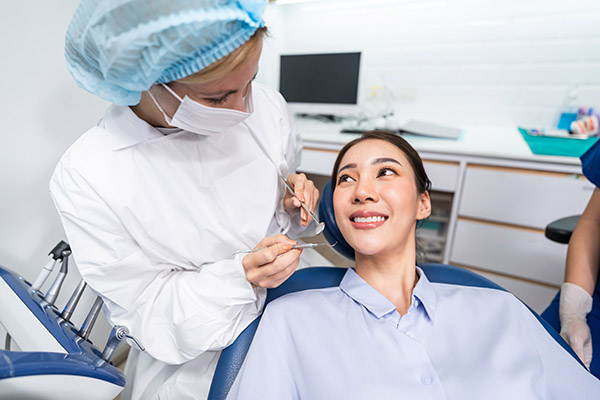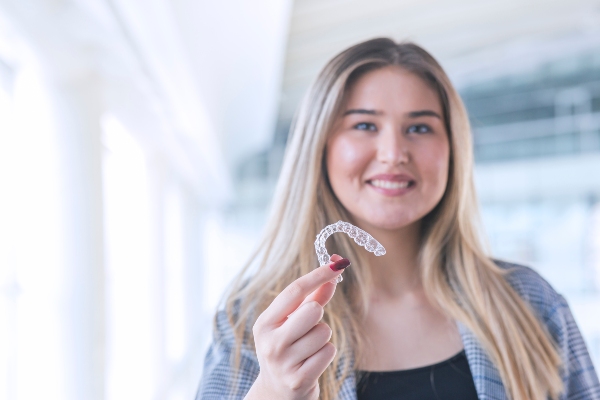 Misaligned teeth often cause secondary oral health issues that affect a person’s daily life. This is why dentists need to monitor the growth and development of the teeth and jaws starting from when the patient is a young age. These periodic dental checks allow for early detection and intervention for orthodontic problems.
Misaligned teeth often cause secondary oral health issues that affect a person’s daily life. This is why dentists need to monitor the growth and development of the teeth and jaws starting from when the patient is a young age. These periodic dental checks allow for early detection and intervention for orthodontic problems.
While an orthodontist would prefer that treatment start at an early age, they will correct dental misalignment in patients of all ages. Keep reading to learn about common problems that orthodontists treat.
Oral health issues that result from misaligned teeth
The pursuit of a perfect smile with straight, proportional teeth keeps orthodontists and cosmetic dentists in business. Yet dental misalignment goes deeper than these cosmetic concerns. These are a few of the oral health issues that could occur because of dental misalignment:
- A bad bite
- Speech and diet difficulties
- Difficulty in cleaning hard-to-reach spots
- Risk of tooth decay
- Teeth grinding
- Soft tissue damage when a bad bite causes a person to bite their inner cheek
- TMJ
Fixing the misalignment of the teeth and/or jaw resolves whichever issues the problem causes. An aesthetically pleasing smile is the bonus that patients get from straightening their teeth. Here are common types of teeth misalignment.
Crowding
Teeth crowding happens when the jaw has less space than the teeth need. This mismatch in the jaws and teeth occurs because of one of the following reasons:
- A jaw that is too small or teeth that are too large
- Excess teeth
- Teeth that grow at an angle or horizontally, pushing the other teeth out of alignment and crowding them together
- Impacted teeth
These abnormalities with the teeth usually have their root cause in the structure of the jaw. An orthodontist may correct crowding by removing extra teeth. They may also prescribe an orthodontic appliance to straighten and align the teeth.
Overbite
Ideally, a person’s upper teeth should cover the lower teeth, but the distance between the two dental arches should be minimal. With an overbite, the upper teeth overlap the lower teeth and lower jaw, leaving a larger-than-normal gap between the two jaws. This causes problems like speech and eating difficulties. A severe overbite can also affect the shape of the face and could cause breathing difficulties.
Overbites can happen when the lower jaw is under-developed or an upper jaw has an abnormality. These are usually hereditary conditions that affect the growth and development of the jaw. Slight overbites can also result from early childhood habits like thumb-sucking and pacifier overuse. Orthodontists will use braces and other custom appliances to correct an overbite.
Gapping
Gapping happens when the jaw is too big and too spacious for the teeth that it holds. Orthodontic treatment can bring the teeth closer together.
Underbite
With an underbite, the lower teeth overlap the upper teeth, which can cause difficulties with speech and diet. A severe underbite can also cause breathing problems if the jaw’s structure obstructs the airway.
Most underbites result from an abnormality in the structure of the lower or upper jaws, which is often hereditary. Treatment involves using an orthodontic appliance to bring the lower jaw forward. An orthodontist may also recommend corrective jaw surgery for severe, debilitating cases.
Restore full function and form to your mouth
Misaligned teeth can become straight with a custom treatment plan from our orthodontist. Get in touch with our Reston office to find out more.
Request an appointment or call Precision Orthodontics & Pediatric Dentistry at 703-391-8800 for an appointment in our Reston office.
Recent Posts
Finding the best orthodontist for your family involves more than simply selecting the nearest practice in the Reston area. Orthodontic treatment often spans months or even years, making it essential to choose a provider who can meet both clinical and personal needs. Knowing which questions to ask and information to consider can help ensure that…
Accelerated orthodontic treatment provides a faster alternative to traditional braces, making it a preferred option for many patients seeking quicker results. This method focuses on reducing treatment time without compromising the quality of tooth movement or long-term dental health. Accelerated orthodontic treatment is ideal for individuals seeking efficient yet safe options for correcting alignment issues.Accelerated…
Ceramic braces are a less-noticeable alternative to metal braces. Similar to metal braces, ceramic braces are made up of two main components: wires and brackets. The brackets are glued to each of the patient’s teeth, while the wires connect the brackets on each dental arch. The wires are used to control how much force the…


